Expert’s Rating
Pros
- Very good performance
- Superb battery life
- Excellent zoom and macro photos
- Clean software
Cons
- Expensive
- Prone to overheating
- Slow charging
Our Verdict
The Xperia 1 VI is an impressive phone in many ways, and much easier to recommend than the 1 V. But the tall 4K screen was its unique selling point, and without it, there’s no clear reason to buy this phone over cheaper rivals.
When it comes to smartphones, Sony has always done things a little differently.
Its recent Xperia handsets have been something of an outlier, opting for a tall, narrow design that’s built for 21:9 widescreen content. In the case of the Xperia 1 V, there was also 4K display.
However, both of those things are gone on the Xperia 1 VI, Sony’s flagship for 2024. Instead, the 19.5:9 aspect ratio is much more in keeping with rivals like the Samsung Galaxy S24 Ultra, while a Full HD+ resolution is actually lower than most similarly priced handsets.
Does the Xperia 1 VI do enough in other areas to make this apparent downgrade worth it? I used it as my main phone for over a week to find out.
Find out what phones Sony is up against in our best smartphones chart.
Design & Build
- Shorter, wider build than before
- Attractive but fragile rear design
- 3.5mm headphone jack
The Xperia 1 VI represents a big shift in design for Sony. That tall, narrow build we’ve come to associate with Xperia handsets is gone, replaced by something that’s a lot more mainstream.
The total dimensions of the phone haven’t changed hugely – it’s just 3mm shorter and 3mm wider than the Xperia 1 V – but it feels like more.
The Xperia 1 VI represents a big shift in design for Sony
Compared to Xperia handsets I’ve used in the past, it’s much easier to hold and means one-handed usage is now possible (albeit not particularly comfortable). Despite being slightly heavier than before, it’s still one of the lighter phones around, at 192g.
I firmly believe that this move benefits the user experience, but there’s no doubt the 1 VI feels a lot like any other Android flagship. The hallmark of a Sony phone has been lost, which will disappoint some people.
The company has added a splash of personality on the back, with a choice of three colours: Platinum (the version I tested), Black or Khaki Green. I’ve seen all three in person, and the green one is my personal favourite.
This isn’t your standard glass-backed phone, though. A textured matt coating means you don’t get the build-up of unpleasant fingerprint smudges or other visible dirt that are commonplace on glossy phones.
It also makes the phone more grippy, but that didn’t stop it falling out of my hand while using Google Maps on the street. Despite a drop of only around 1m, the glass at the top shattered and there was a significant dent in the aluminium frame.
This is surprising, given the back of the phone is equipped with Gorilla Glass Victus, which manufacturer Corning specifically says survived “drops onto hard, rough surfaces from up to 2 metres” in internal testing.
The Gorilla Glass Victus 2 on the front is supposedly even tougher, but on this evidence, I’d be worried about how it might fare. If you plan on using the phone around any hard surfaces, I’d highly recommend a case.
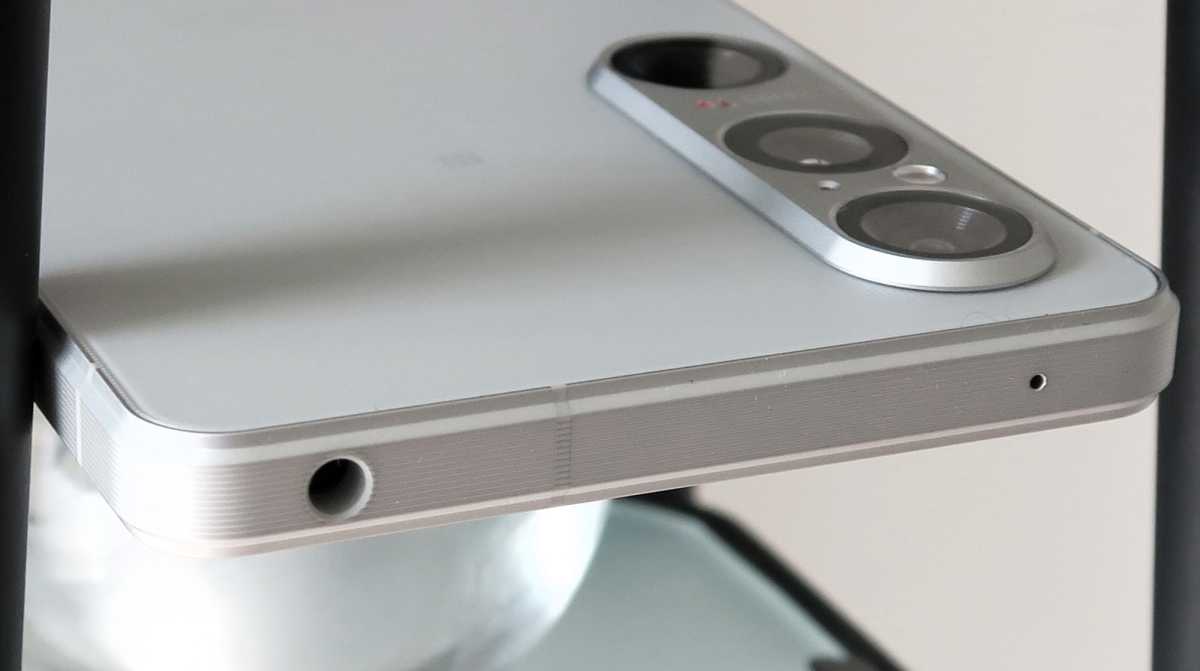
Anyron Copeman / Foundry
However, one area where I am confident in its protection is water and dust. The Xperia 1 VI has both IP65 and IP68 resistance, meaning it can survive submersion in up to 1.5m of water for 30 minutes and is fully sealed against dust.
Unlike most phones, there are a few interesting things to note on the sides of the phone. The most significant is a 3.5mm headphone jack, which is a rare sight on any handset, let alone a flagship. Another is the SIM tray, which can easily be opened and closed without needing a fiddly ejector tool.
Sony is also one of the few brands resisting the under-display fingerprint sensor. It’s still built into the power button on the Xperia 1 VI, and easy to set up, fast and reliable. Some other companies should take note.
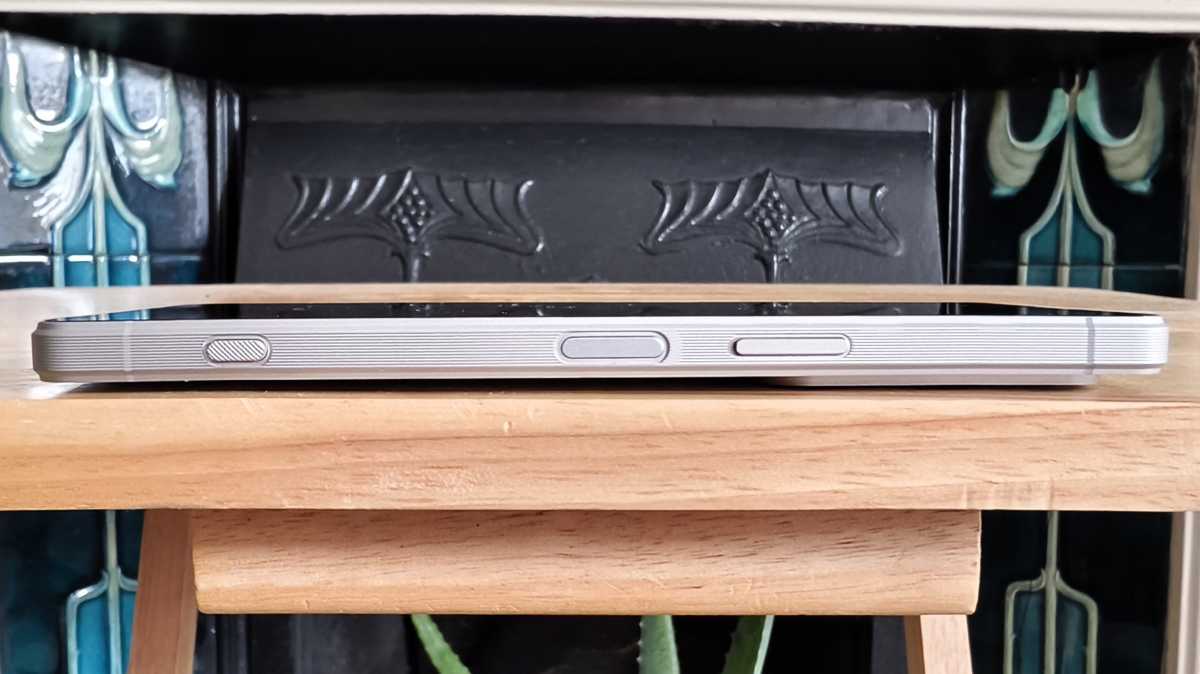
Anyron Copeman / Foundry
The last thing to mention here is the vibration motor, which delivers some of the most realistic haptics I’ve used on a phone. The feedback while typing, managing open apps and taking photos is a real joy.
Screen & Speakers
- 6.5-inch, Full HD+ display
- 120Hz LTPO OLED
- Dual stereo speakers
It may have more mainstream appeal, but there’s no doubting that the Xperia 1 VI’s display is a significant downgrade on paper.
The 4K, 21:9 panel is gone, replaced by a Full HD+ (1080 x 2340) version at 19.5:9. If you’re one of the people who enjoyed watching 4K movies on your phone, this will come as a big disappointment.
However, if that’s not important to you, the Xperia 1’s screen will probably suit you better. The 6.5-inch OLED is now LTPO, meaning it can automatically drop all the way down to 1Hz when you don’t need that smooth 120Hz refresh rate, benefitting battery life.
Despite losing its headlining feature, the Xperia 1 VI’s display is much more versatile and practical than its predecessor
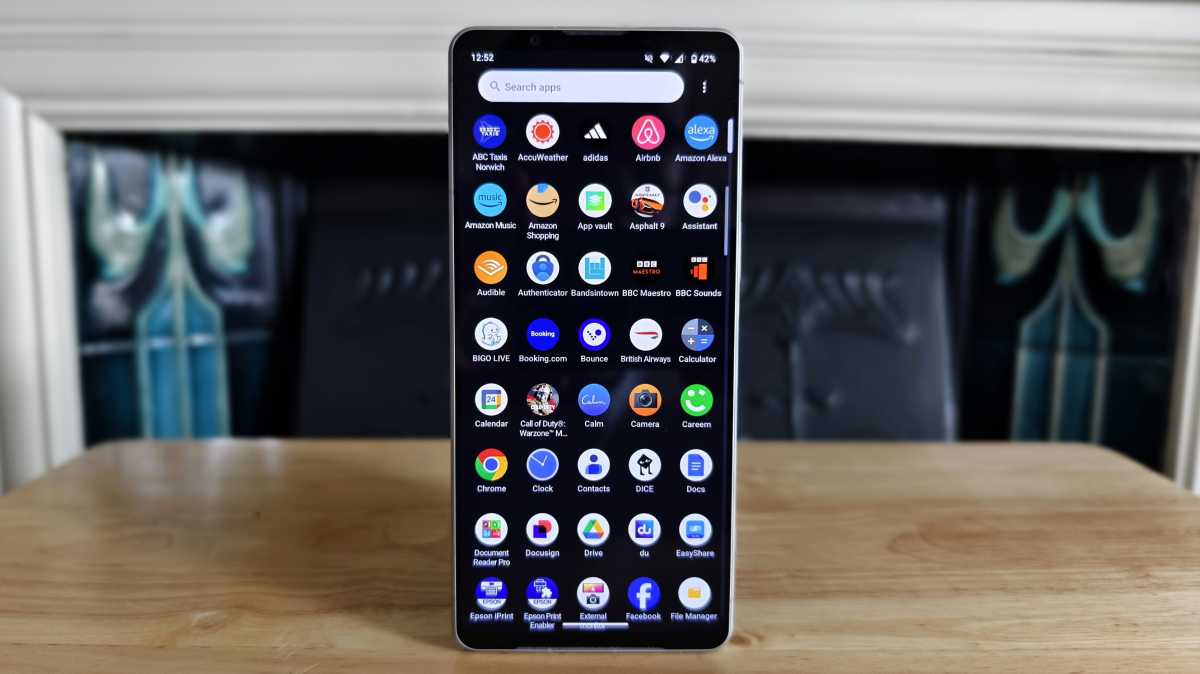
Anyron Copeman / Foundry
The screen also gets impressively bright – I recorded 723 nits, and a side-by-side demo next to the Xperia 1 V proved how much brighter it can get. As a result, outdoor visibility is excellent, even in direct sunlight.
Also, aside from supported videos, the lower resolution isn’t as much of an issue as you might expect. Content still looks clear and crisp in all scenarios, and it’s worth remembering that many 1440p phones (such as the Galaxy S24 Ultra) are set to 1080p by default.
Despite losing its headlining feature, the Xperia 1 VI’s display is much more versatile and practical than its predecessor.
There are no changes to the dual stereo speakers, meaning they still produce clear, balanced audio with a nice hit of bass. However, the maximum volume is lower than on most, and it’s prone to distortion as things get louder.
Of course, the 3.5mm jack means you can easily connect headphones or speakers via Bluetooth or a physical wired connection. And unlike its predecessor, the Xperia 1 VI also now supports Hi-Res LDAC audio wirelessly, which is a nice improvement that audiophiles can get excited about.
Specs & Performance
- Snapdragon 8 Gen 3 and 12GB RAM
- Superb all-round performance
- 256GB storage, expandable up to 1.5TB
Like most Android flagships in 2024, the Xperia 1 VI is powered by the Snapdragon 8 Gen 3.
It’s Qualcomm’s latest and greatest phone chipset at the time of writing, and it shows. Alongside 12GB of RAM, performance is simply superb in all scenarios.
The majority of the time most people spend on a phone involves tasks that can’t push the Xperia 1 VI close to its performance limits. My typical daily tasks include web browsing, messages, email, watching videos and taking some photos, often quickly switching between them.
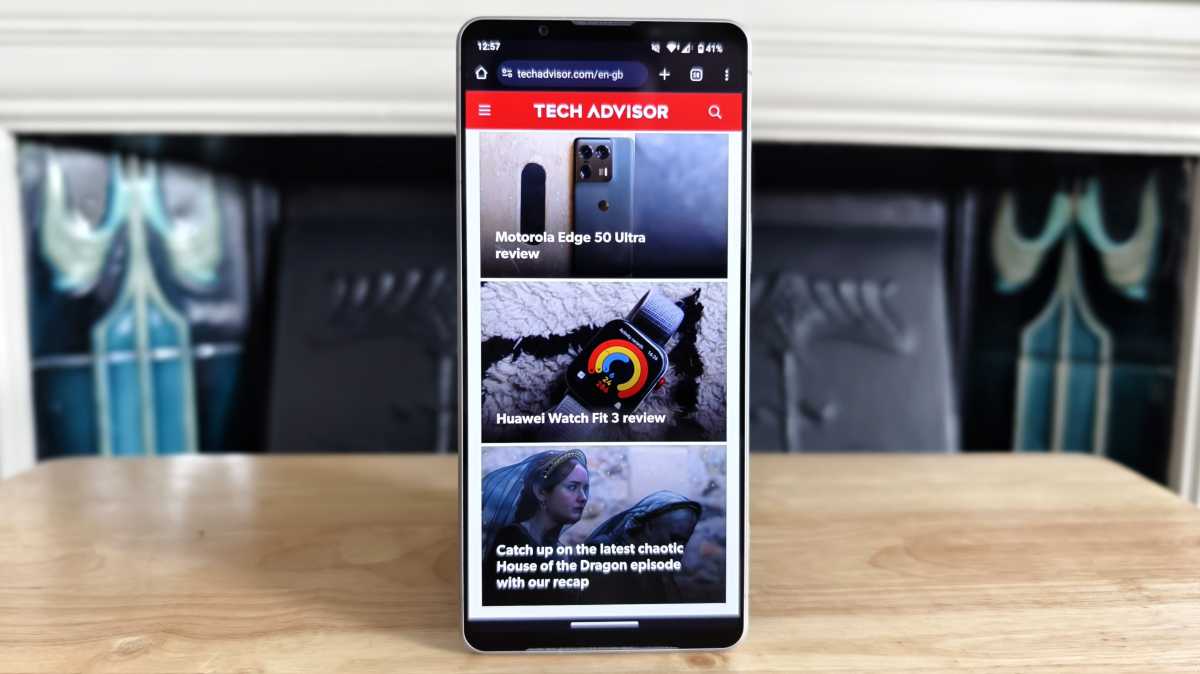
Anyron Copeman / Foundry
Throughout it all, there wasn’t even a hint of hesitation, let alone any noticeable slowdown. A couple of app crashes I experienced are almost certainly software bugs rather than any lack of power.
When you want to take things up a notch, the Xperia 1 VI can also handle it. I played a few of the Play Store’s most demanding games – Asphalt 9, Call of Duty: Mobile, Genshin Impact and PUBG Mobile in an ultimately futile attempt to push the phone to its limits.
Performance is simply superb in all scenarios
It’s hard to think of any situation where the 1 VI wouldn’t have enough performance, even for the most dedicated power users.
However, you will have to deal with a significant build-up of heat. It happens while playing those games, as you might expect, but also occasionally during everyday tasks such as taking photos or watching YouTube. When charging, it becomes uncomfortably hot to the touch.
This shouldn’t be a dealbreaker, but I was expecting more efficient cooling from such an expensive device.
Sony Xperia 1 VI benchmarks
The only configuration available in the UK offers 256GB of storage. That might seem a bit limited, but you can easily add up to 1.5TB via the microSD card slot.
The Xperia 1 VI’s connectivity has also been upgraded to the absolute latest standards – I’m talking Wi-Fi 7 (via a future software update) and Bluetooth 5.4. You also get 5G, of course, and NFC for contactless payments.
Cameras
- 50Mp main
- 12Mp 3.5-7.1x telephoto
- 12Mp ultrawide
- 12Mp selfie
In terms of camera hardware, the Xperia 1 VI is largely unchanged compared to its predecessor.
It means the phone is still using Sony’s custom Exmor T, a 48Mp, f/1.9 main lens. That’s despite the company’s 1-inch LYT-900 being used on the Xiaomi 14 Ultra, the best camera phone you can buy right now.
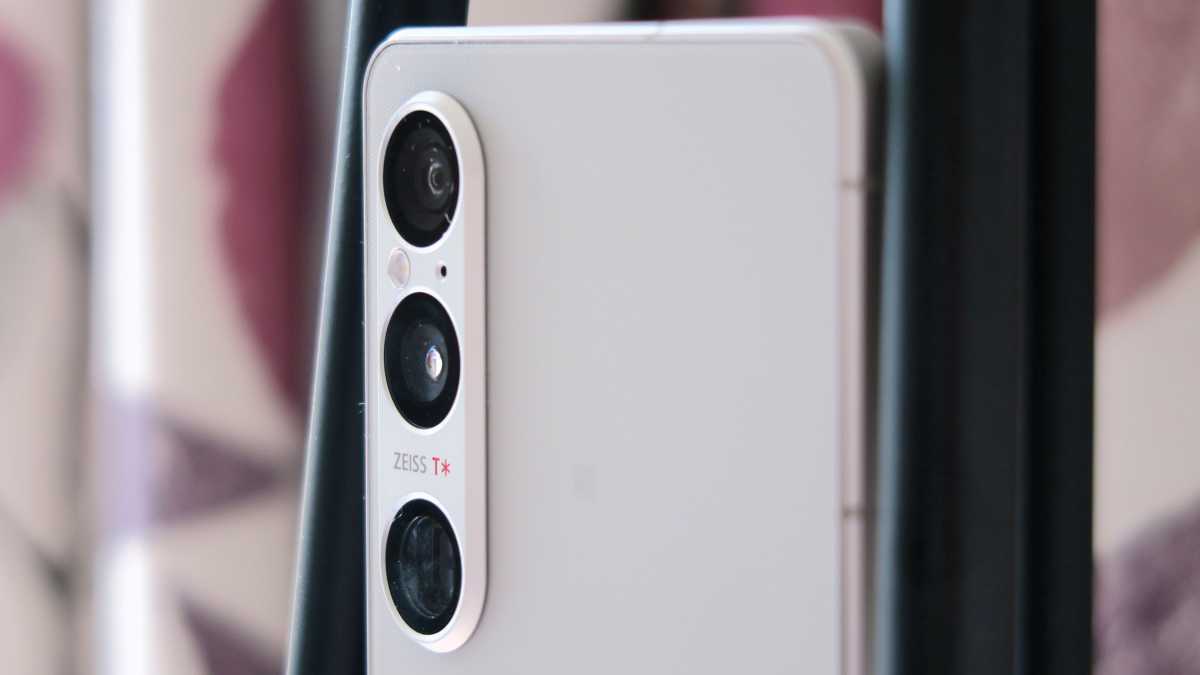
Anyron Copeman / Foundry
As a result, photos from the Xperia 1 VI are very good, but a step down from the finest around. Not making any changes feels like a missed opportunity for Sony in such a competitive field.
Despite this, in good lighting conditions, you’re unlikely to be disappointed. The vast majority of test shots I took were superb, offering excellent detail and dynamic range. Unlike most phone cameras, photos are also impressively true to life.
Exposure can be a little more temperamental, but when you get it right, images look very professional. In my experience, it’s equally well suited to both the natural world and urban environments.
Photos from the Xperia 1 VI are very good, but a step down from the finest around
You can use the main lens for portrait-style shots, though I preferred to stand a little further back and opt for the telephoto instead.
The 12Mp, f/2.3 lens can move continuously between 3.5x and 7.1x optical zoom, making it more versatile than most other camera phones. There is a small drop-off in quality compared to 1x shots, but it’s nothing like as significant as digital zoom.
And the ‘bokeh’ background blur is excellent, doing a very good job of detecting where the subject ends and the background begins. I tested it on a person, dog and bird, and there were no weaknesses.
Another big reason to use the telephoto lens is for close-up macro shots, which are hands-down the best I’ve ever taken on a smartphone. Whether you want to take photos at 120mm, 360mm (equivalent) or something in between, the useful focus peaking feature ensures you get a great shot every time.


There is a clear step down in quality when you switch to the 12Mp ultrawide, but it’s not as dramatic as one some phone cameras. You can still get some impressive pictures with that full 123˚ field of view.
However, all three lenses struggle a lot more in low light. You can get some very good shots at night, but it regularly struggles with shadows and noise. I’ve tested a few excellent low-light phone cameras recently – this isn’t one of them.
The 12Mp front-facing camera is much more impressive, offering clear, detailed selfies and the option for realistic background blur.
The Xperia 1 VI still has a unique two-stage physical shutter button, where a half press is used to focus before you press down fully to capture it. Alongside a volume rocker that doubles as zoom controls, it feels a lot like you’re using a dedicated camera.
One big plus point for the Xperia 1 VI is that Sony no longer has three separate camera apps – the options from Photography Pro, Video Pro and Cinema Pro are all now included in the main camera app.
However, there’s still a feeling that the phone is best for people who want to make the most of these pro-level settings. With a bit of fine tuning, you can probably take stellar photos, but it’s still some way short of the best point and shoot phone cameras.
Given that there used to be two apps dedicated to it, it’s also worth mentioning video. The Xperia 1 VI can capture footage in up to 4K at 60fps, though this will use a lot of storage space. The default FHD at 30fps is fine, but exposure and detail both take a hit compared to stills.
Battery Life & Charging
- 5000mAh battery
- Two-day battery life most of the time
- 30W wired charging, 15W wireless
The Xperia 1 VI has a 5000mAh battery, which is a very common capacity for modern smartphones.
However, Sony is claiming two full days of battery life, which made me do a double take when I first saw it. Can the phone really last 48 hours or more on a single charge?
As it turns out, yes it can! Throughout my testing time, I was going two or even three full days between charges, despite using the phone for 2-3 hours per day.
Can the phone really last 48 hours or more on a single charge? Yes it can!
Granted, this was mostly while on Wi-Fi and working from home. But even on those days with high brightness, mobile data and GPS navigation, I ended the day with plenty of charge to spare.
Our regular PCMark battery test reflects that – a score of 14 hours and 55 minutes ranks it just outside the top 10 best battery life phones we’ve reviewed.
However, charging isn’t quite as impressive. The Xperia 1 VI only supports 30W wired USB-C speeds, and there’s no charger included in the box. Using a 65W one I own, it reached 52% after half an hour, with 0-100% taking 80 minutes.
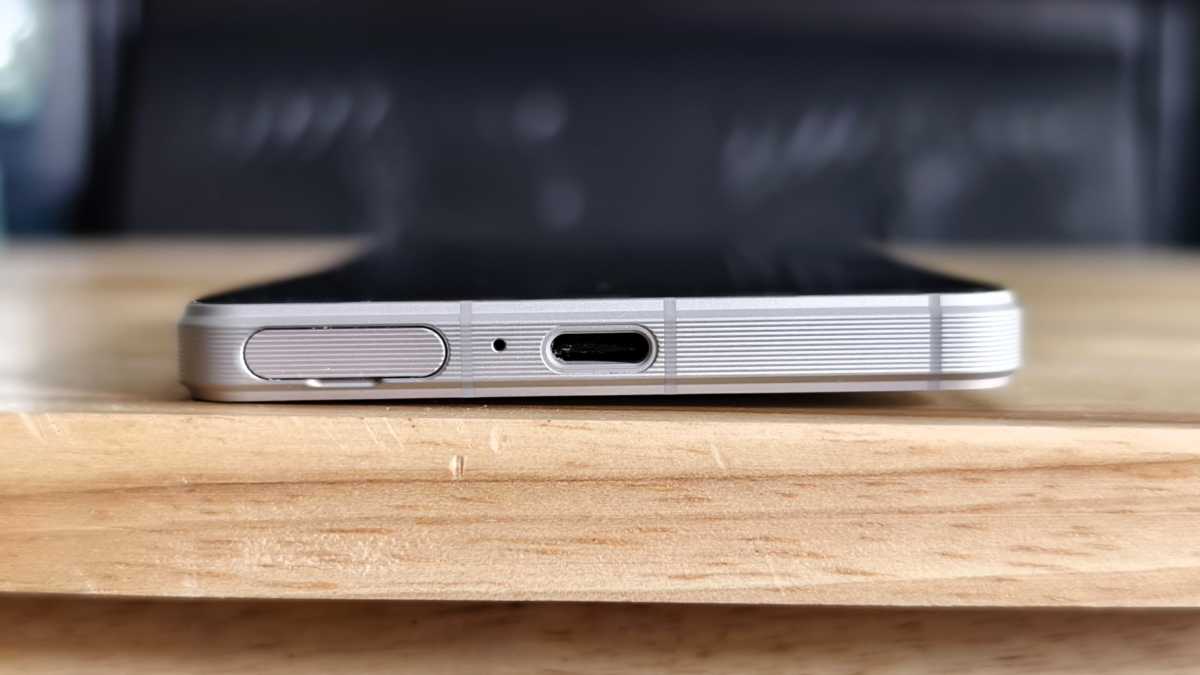
Anyron Copeman / Foundry
Qi wireless charging at 15W and reverse wireless charging are also supported.
Software & Apps
- Runs Android 14
- Clean, slick user experience
- 3 years OS updates, 4 years security
Out of the box, the Xperia 1 VI runs Android 14, the latest version of Google’s operating system at the time of writing.
The software experience is refreshingly close to what you’ll find on Pixel phones, with no cluttered design or off-putting pop-ups or ads. It feels like Android as Google intended it to be.

Anyron Copeman / Foundry
In fact, the only real difference I noticed is what Sony calls ‘Side sense’. Essentially, it’s a shortcut bar that offers easy access to key apps and functions. Personally, I found it more annoying than useful, but it can easily be turned off.
Sony has included a few apps of its own – Music Pro, Video Creator and External monitor – but most can be uninstalled. And moving all the main camera functions within one redesigned app makes a big difference.
The software experience is refreshingly close to what you’ll find on Pixel phones
In terms of updates, Sony is supporting the phone with three major OS versions and four years of security patches. That means it should get up to and including Android 17, plus further support until 2028.
It’s not bad, but a little underwhelming by modern standards. Samsung and Google both offer seven years of both on their flagships, while even the Xiaomi 14 and 14 Ultra offer four OS and five security.
Price & Availability
At launch, the Xperia 1 VI costs £1,299 in the UK when bought outright.
It’s available direct from Sony, but also via Amazon, AO and Very.
Alternatively, you can see the best contract options in the widget below.
However, unlike the Xperia 1 V, the 1 VI isn’t available in the US.
That outright price in the UK puts it in direct competition with some of the most expensive flagships around, including the Samsung Galaxy S24 Ultra (from £1,249), Xiaomi 14 Ultra (from £1,299) and iPhone 15 Pro Max (from £1,199).
For most people, one of those will be a better choice.
Should you buy the Sony Xperia 1 VI?
The Xperia 1 VI is a significant change for Sony, bringing the design and display of its flagship in line with other Android phones. While it might sound like a downgrade, the phone benefits as a result.
Other highlights include strong Snapdragon 8 Gen 3 performance, excellent battery life and very good zoom and macro photos.
However, the rest of the camera experience is a step down from the best camera phones around, while slow charging and occasional overheating issues are frustrating.
Ultimately, when you’re paying this sort of money for a phone (or committing to a long, expensive contract), you need to be sure that it’s the right device for you. And for most people, these flaws mean that’s not the case.
Specs
- Qualcomm Snapdragon 8 Gen 3 chipset
- 12GB RAM
- 256GB internal storage (expandable up to 1.5TB via Micro-SD)
- 6.5-inch, 1080 x 2340 LTPO OLED display, 120Hz
- 48Mp, f/1.9 main camera with OIS
- 12Mp, f/2.3-3.5 telephoto camera with 3.5x-7.1x optical zoom and OIS
- 12Mp, f/2.2 ultrawide camera
- 12Mp, f/2.0 front-facing camera
- 5000mAh battery
- 30W wired charging
- 15W wireless charging
- Reverse wireless charging
- 5G
- Dual stereo speakers
- Wi-Fi 7
- Bluetooth 5.4
- NFC
- IP65/IP68 water and dust resistance
- Android 14
- 162 x 74 x 8.2 mm
- 192g




